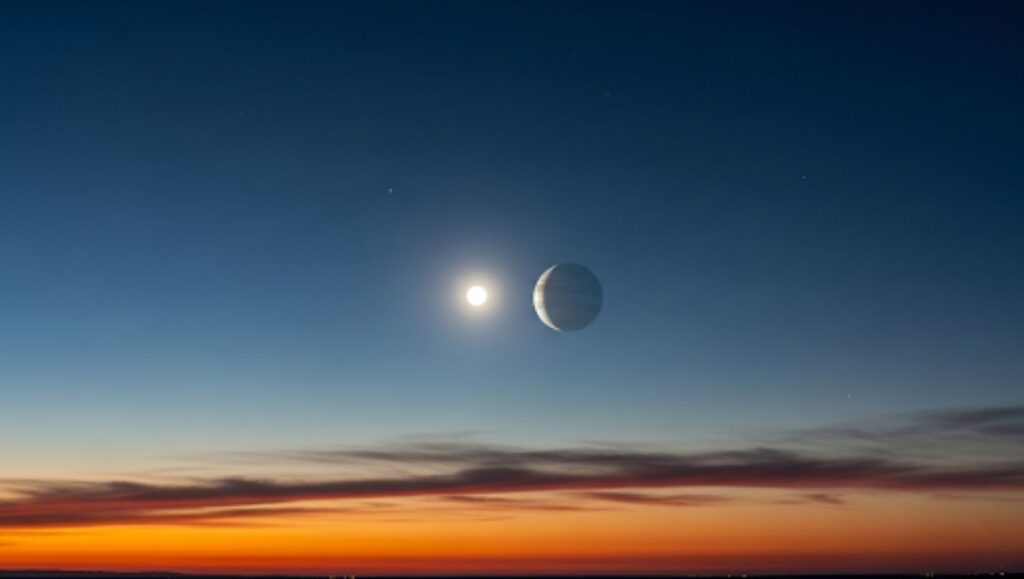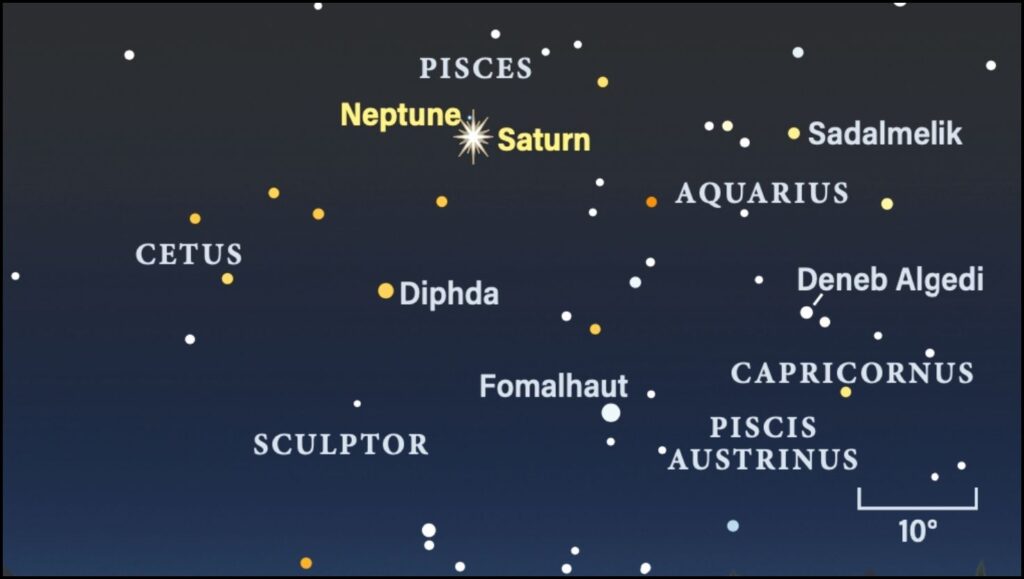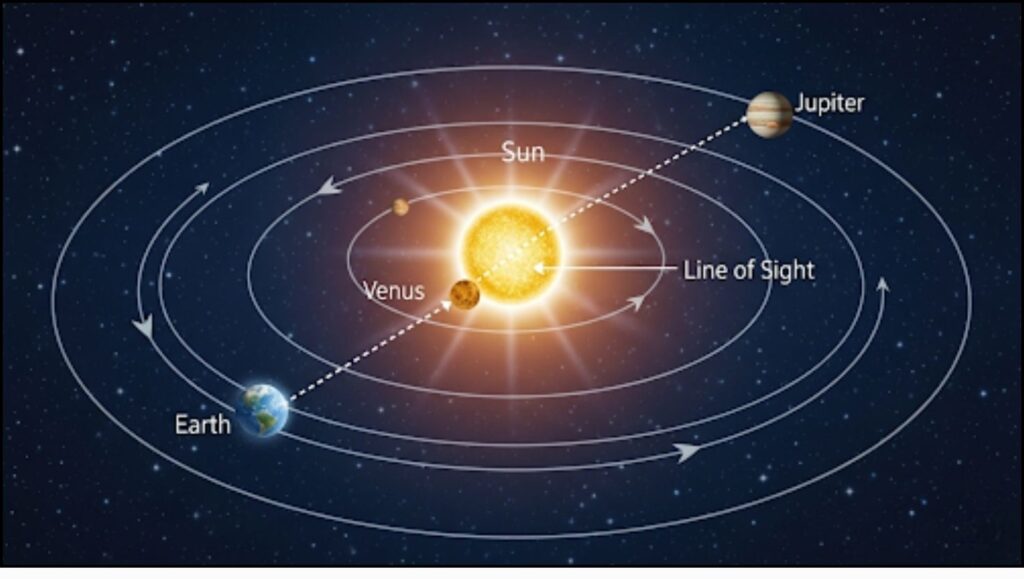
Skywatchers across the globe are preparing for a spectacular celestial event this week as the sky’s two brightest planets, Venus and Jupiter, appear to nearly touch in a brilliant Venus-Jupiter conjunction. Peaking on the evening of August 12, the event will offer a stunning, naked-eye spectacle shortly after sunset.
How to Watch the Brilliant Venus-Jupiter Conjunction
| Key Fact | Detail |
| Main Event | A close planetary conjunction of Venus and Jupiter. |
| Peak Visibility | Evening of Tuesday, August 12, 2025. |
| Required Equipment | None. The event is easily visible to the naked eye. |
| Scientific Cause | A line-of-sight alignment from Earth’s perspective. |
A Spectacle in the Twilight Sky
This week’s Venus-Jupiter conjunction will bring the “Evening Star” and the “King of Planets” into a breathtakingly close formation. From our vantage point on Earth, the two worlds will seem to be separated by less than the width of a full moon in the sky, creating a single, brilliant point of light for casual observers.
“Planetary conjunctions are a beautiful reminder of the constant motion of our solar system,” said Preston Dyches, a science communicator at NASA’s Jet Propulsion Laboratory, in a past agency release about celestial alignments. “They provide a fantastic opportunity for people to go outside and connect with the cosmos, using nothing more than their own eyes.”
While these two planets pair up in the sky periodically, conjunctions this close are less common and offer a particularly striking visual. Venus will be the brighter of the two, shining with a steady, silvery light. Jupiter will appear slightly fainter but still outshine every star in the night sky.

How and When to See the Venus-Jupiter Conjunction
Catching this celestial display requires timing but no special equipment. The event will be accessible to observers worldwide, provided they have clear skies.
Finding the Planets
- The best time to look is approximately 30 to 60 minutes after your local sunset. Face west, the direction the sun just set, and look for two exceptionally bright “stars” low on the horizon. The viewing window is narrow; the planets will follow the sun and set about an hour or so after twilight begins.
- “Viewers should find a location with an unobstructed view of the western horizon,” advises Sky & Telescope magazine. “Hills, trees, and buildings can easily block the view, as the planets will be very low in the sky.” This week, the pairing will take place in the constellation Leo.
Enhancing Your View
- While the planetary conjunction is a magnificent naked-eye event, binoculars will significantly enhance the experience. A standard pair of binoculars will not only make the planets appear brighter but may also reveal Jupiter’s four largest moons—Io, Europa, Ganymede, and Callisto—as tiny pinpricks of light flanking the giant planet.
- Observers with a small telescope will be treated to even more detail. A telescope can show the distinct disk of both planets and may even resolve Jupiter’s faint cloud bands. Because of its position relative to Earth and the sun, Venus will likely appear as a tiny, featureless crescent, similar to a miniature moon.
The Science Behind a Planetary Conjunction
Astronomers are quick to point out that this event is a line-of-sight illusion. The planets are not physically close to one another in space. During the conjunction, Venus will be approximately 150 million miles (241 million kilometers) from Earth, while Jupiter is more than three times farther away, at a distance of nearly 590 million miles (950 million kilometers).
A planetary conjunction occurs when two or more planets appear close together in the sky from our perspective on Earth. It is a result of the planets’ orbits and Earth’s own path around the sun aligning in a way that places them in the same celestial neighborhood.
“These alignments are a beautiful consequence of living in a solar system with planets moving at different speeds on different orbital paths,” explains Dr. Patrick Hartigan, a professor of physics and astronomy at Rice University. While the planets appear as close celestial neighbors, they remain separated by hundreds of millions of miles.

The frequency of these events varies. Venus and Jupiter align in the night sky about once a year on average, but the perceived separation between them changes with each event. This week’s close pass makes it a particularly noteworthy event for stargazing enthusiasts and anyone looking for an excuse to gaze upward. Future celestial events, including meteor showers and other planetary pairings, are a regular occurrence. For now, this luminous meeting of Venus and Jupiter offers a simple, profound, and accessible connection to the grand mechanics of our solar system.
A New Visitor from Deep Space: What Scientists Know About Interstellar Object A/2025 F1
